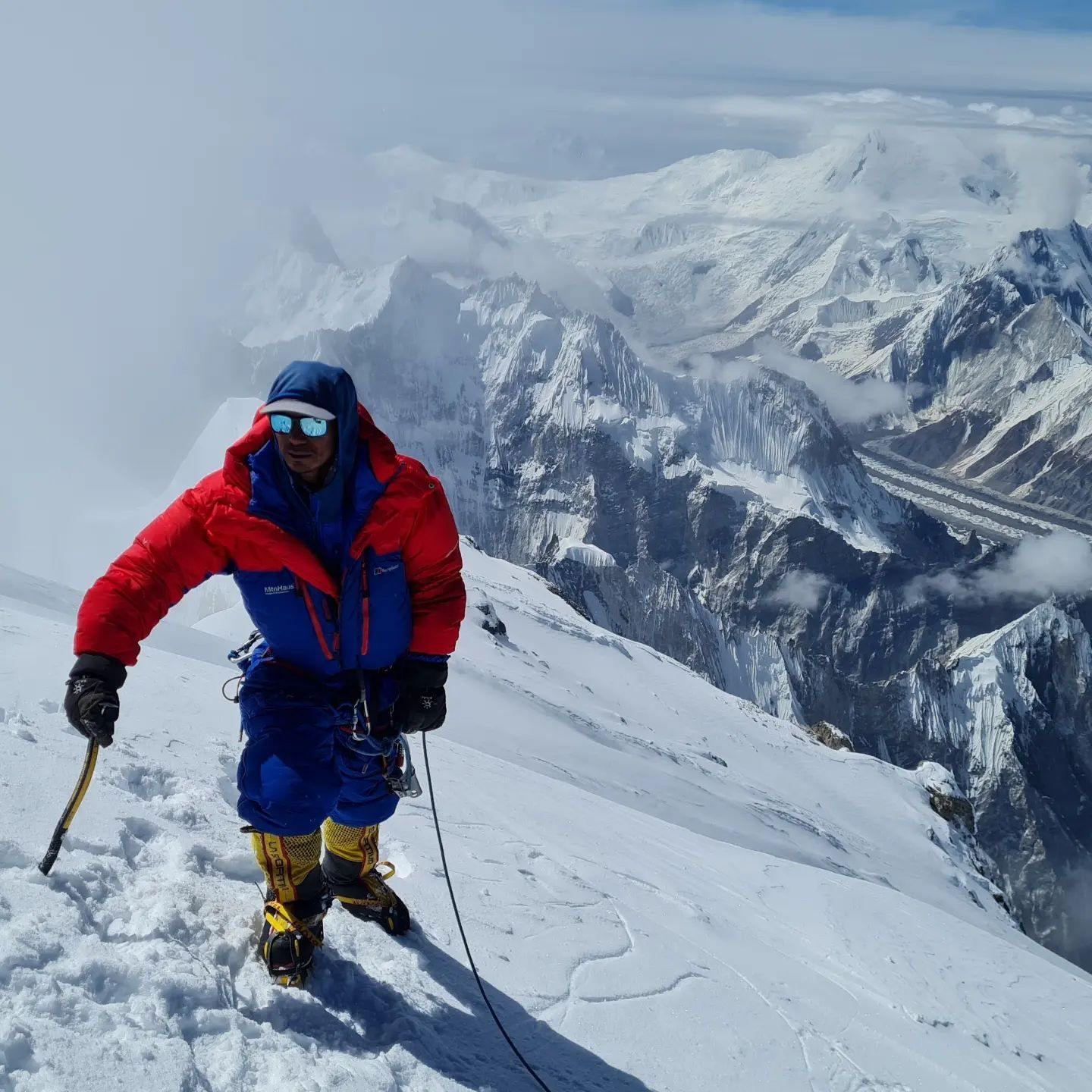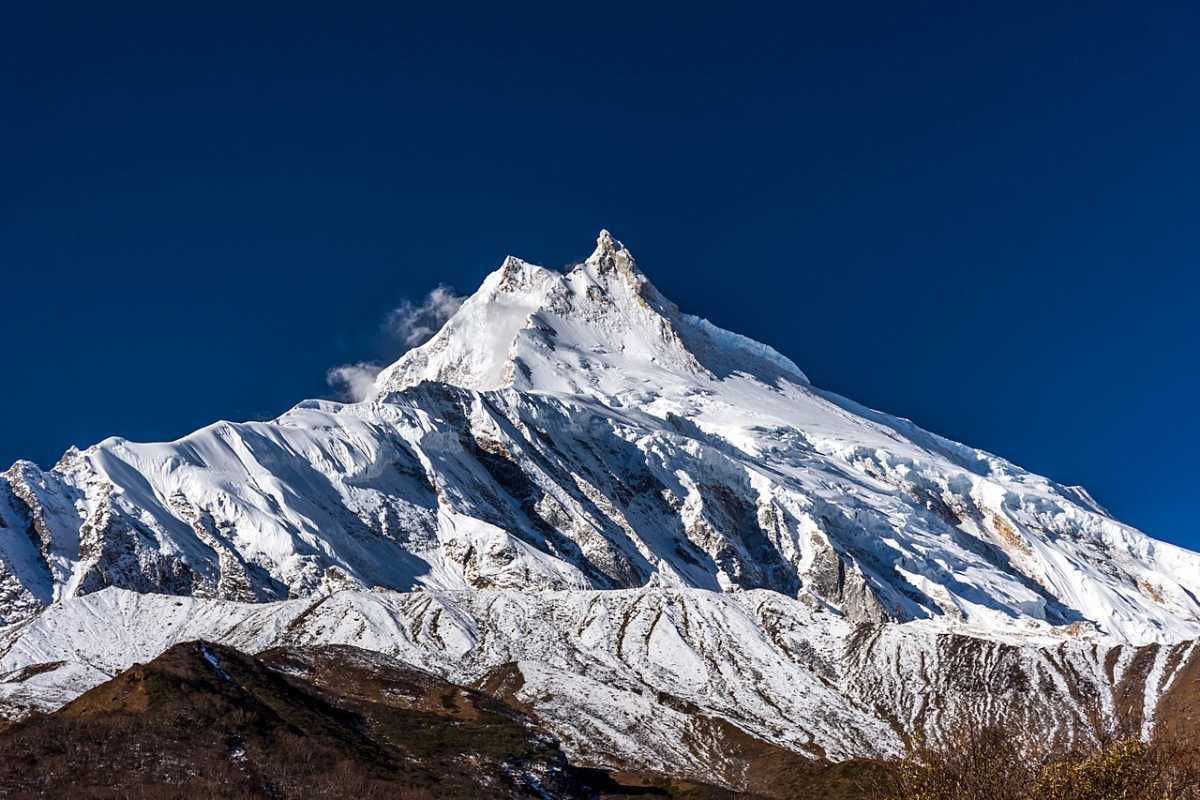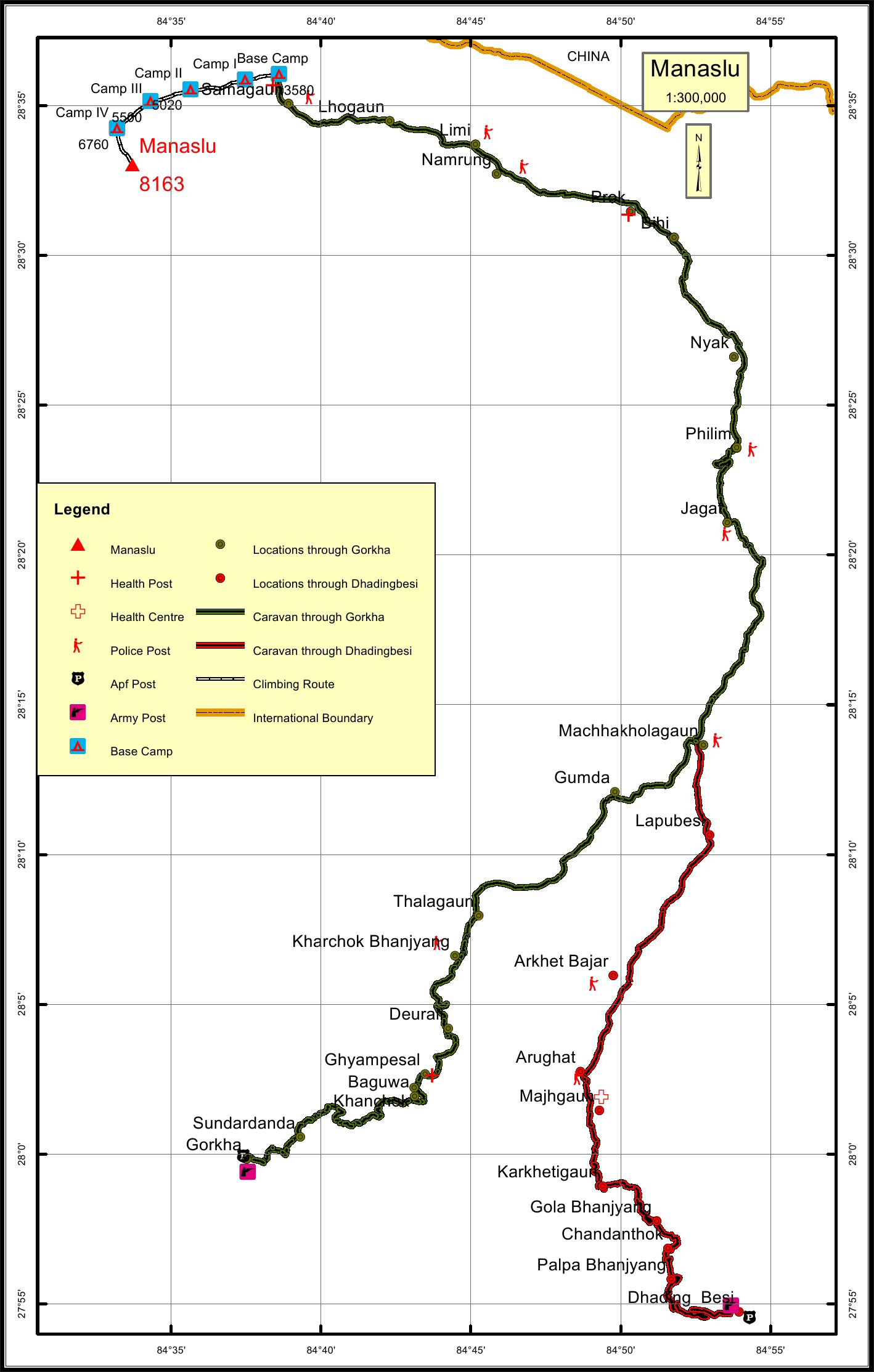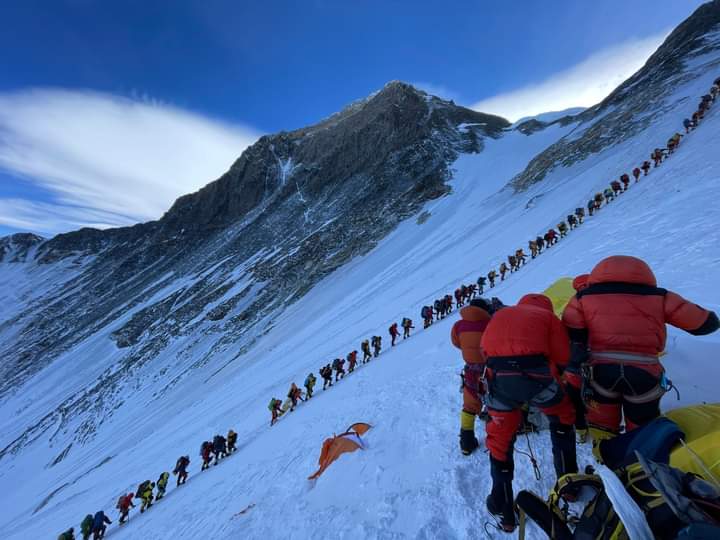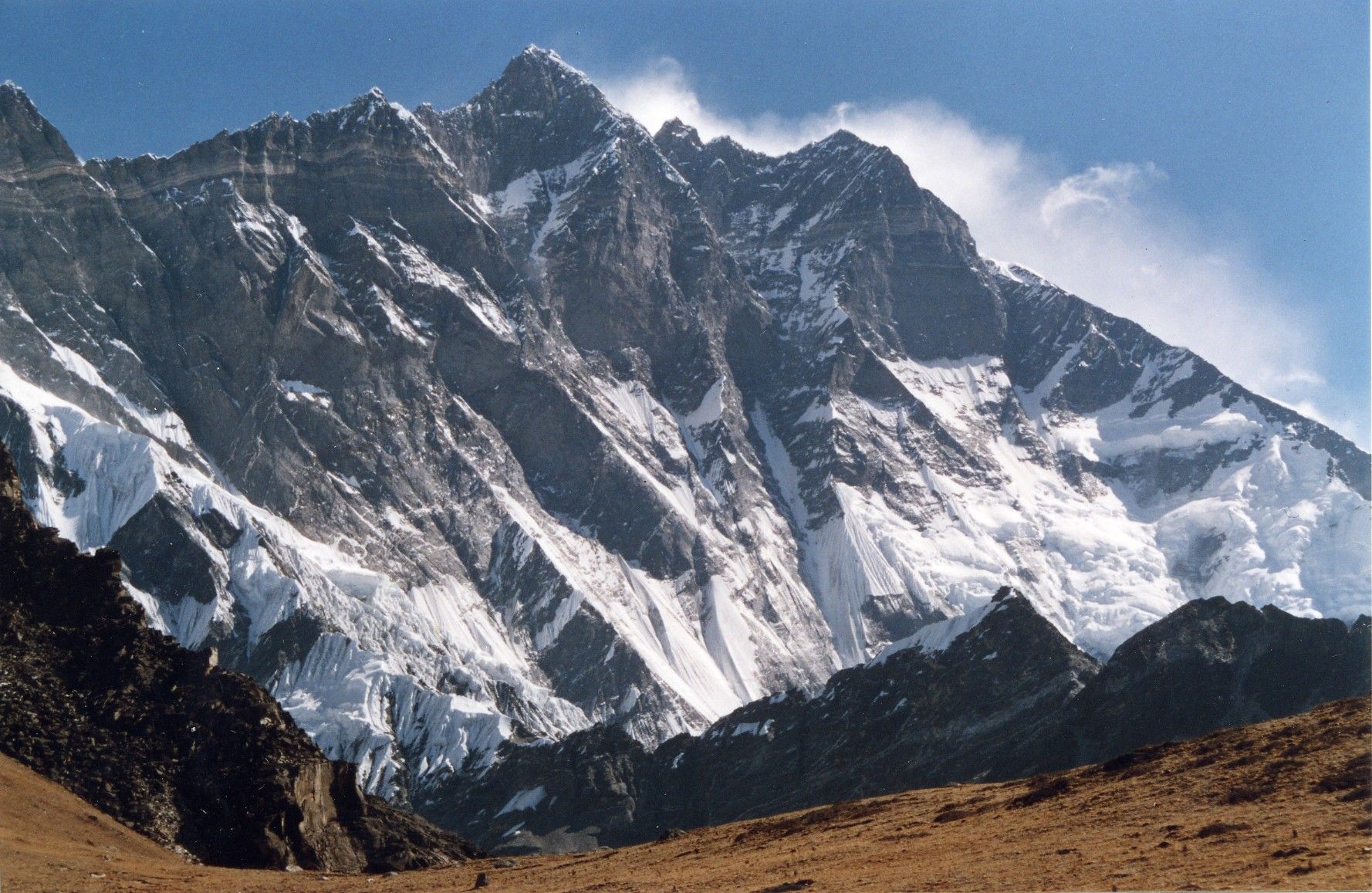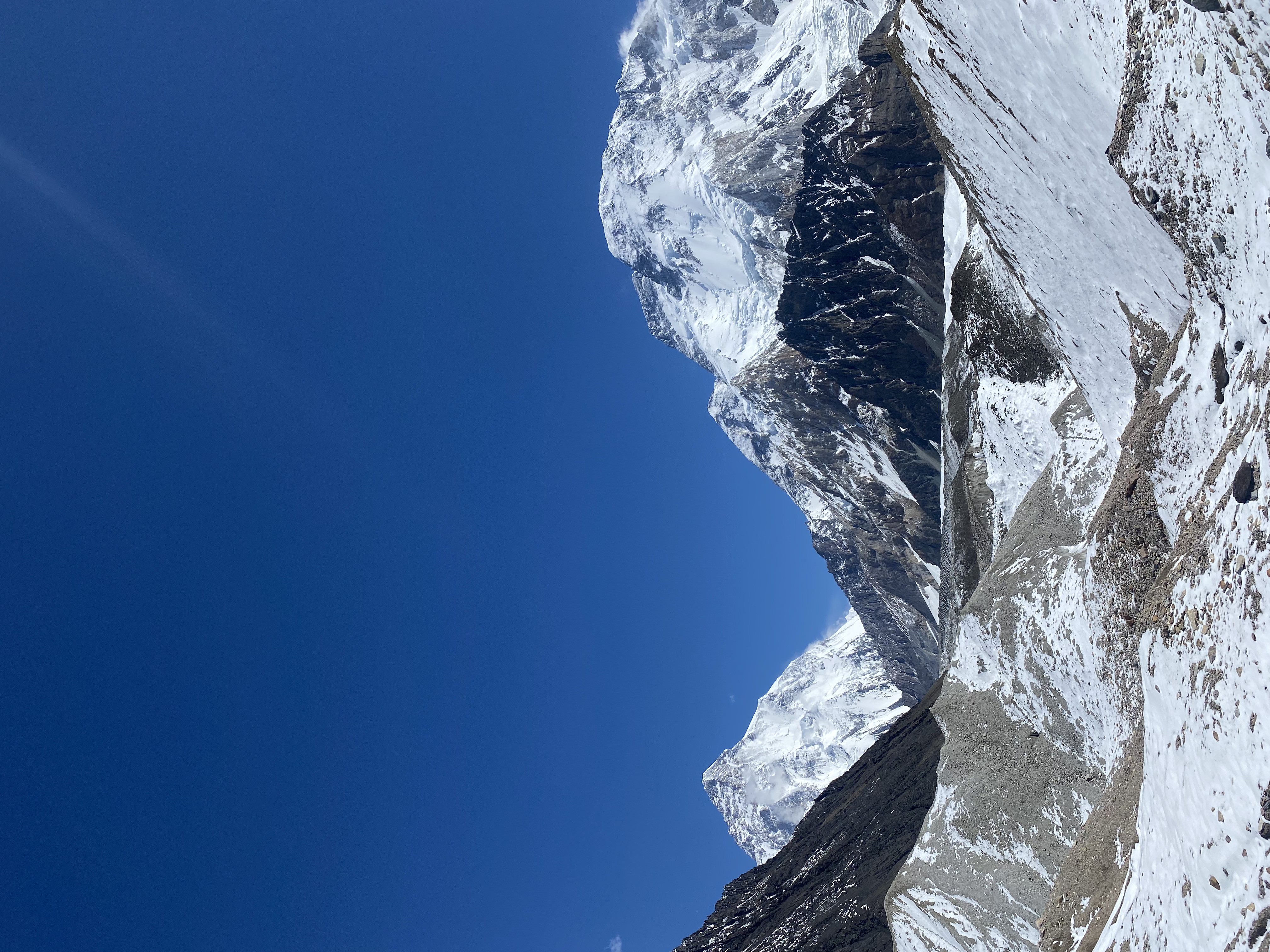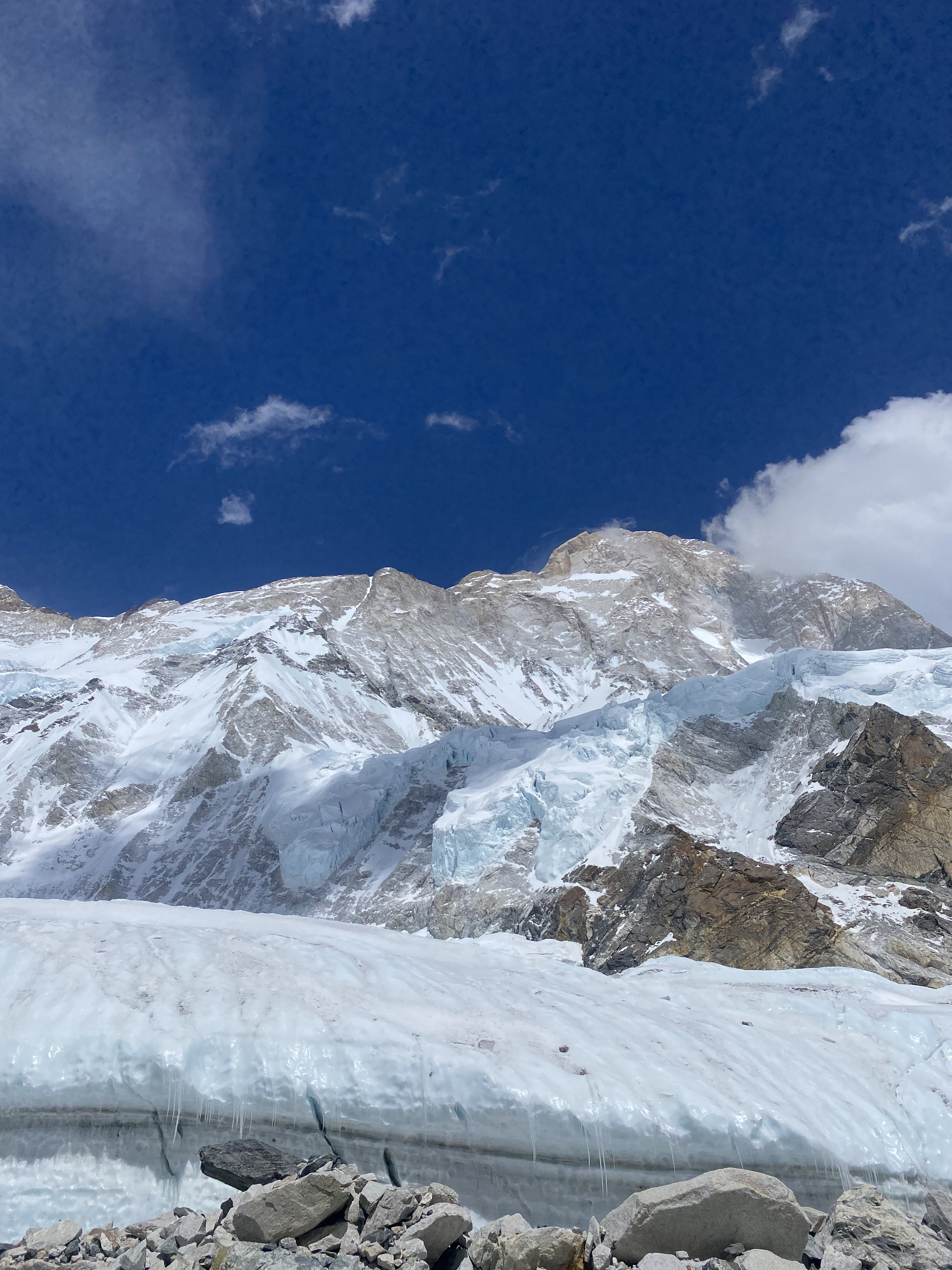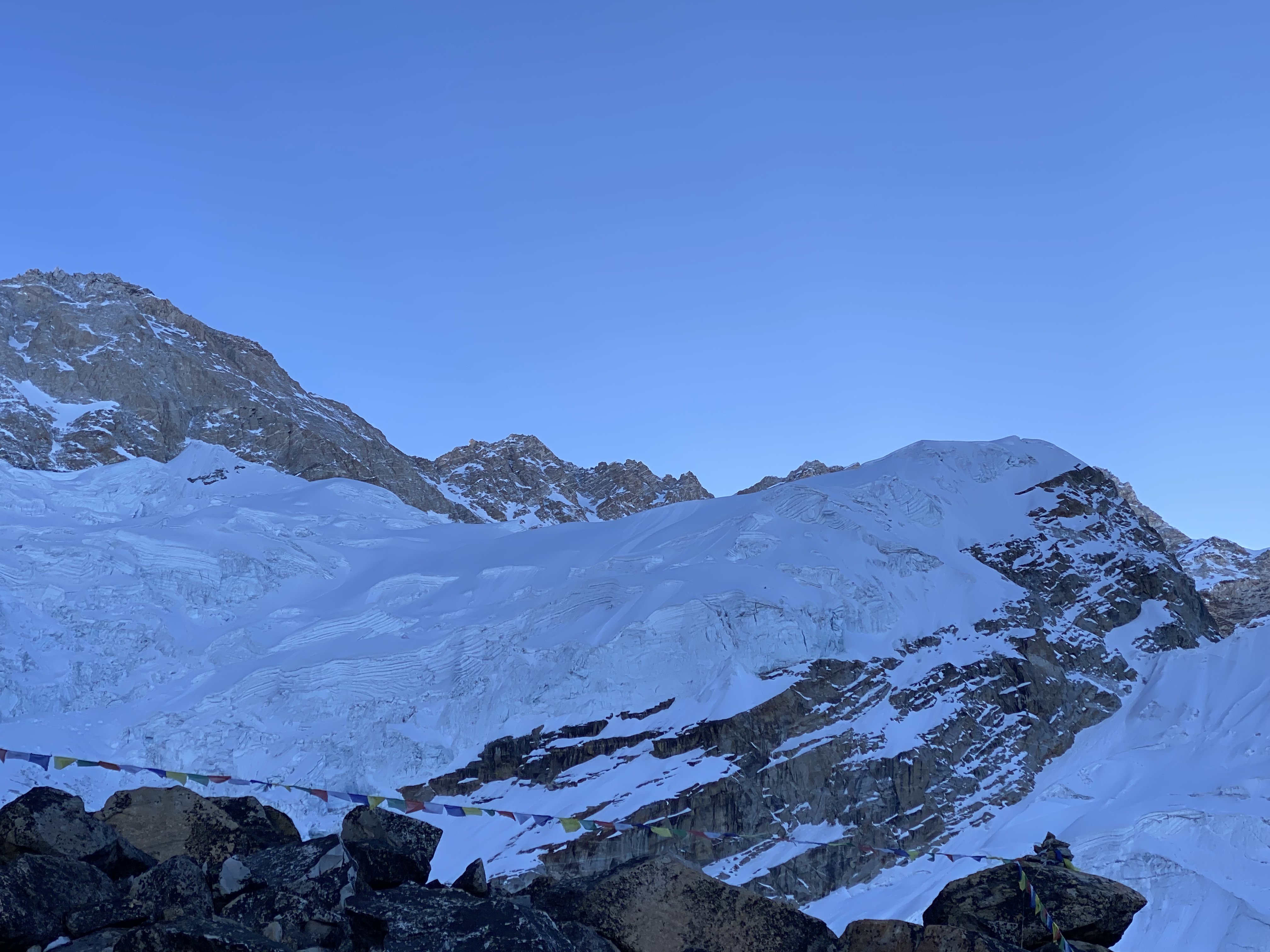Located in the heart of the mighty Himalayas, Mount Manaslu is an awe-inspiring symbol of Nepal’s stunning beauty. Manaslu is the 8th tallest mountain in the world, reaching 8,163 meters (26,781 feet) above sea level. The name Manaslu comes from the Sanskrit word ‘Manasa,’ which means ‘mind’ or ‘spirit,’ symbolizing the ‘mountain of spirit.’ It is also known as Kampunge, Kutang, or Peak 30. This enormous mountain calls out to adventure lovers and nature enthusiasts, inviting them to experience a journey beyond the usual.
Found in the western part of Nepal at Latitude 28° 32' 58" and Longitude 84° 33' 43", Manaslu stands as the highest peak in the Mansiri range. This sub-range of the Nepal Himalayas is surrounded by Larke Pass, Budhi Gandaki River, Gya Pass, and Marshyangdi River. The position of Manaslu makes it a part of a stunning region that includes other great mountains like Ngadichuli (7,871 m), Himalchuli (7,893 m), and Shringi (7,187 m). The area is also home to high-altitude lakes like Kalchuvan (Kal Tal) and Birendra Tal.
Manaslu is important not just for its geography but also for its history. The first successful climb was on May 9, 1956, by Toshio Imanishi from Japan and Gyaltsen Norbu Sherpa from India, as part of a Japanese expedition led by mountaineer Maki Yuko. They chose the difficult North East Face route for their climb. In 1972, Italian climber Reinhold Messner made his ascent from the southwest face. Then, in 1985, Eric Moriver successfully climbed it during the winter using the South Face West Ridge.
The shape of Manaslu’s peak stands out like a massive pyramid, covered in pristine snow that sparkles in the sunlight. The mountain’s slopes are adorned with huge glaciers, creating an almost unreal landscape that is breathtaking. As the sun rises, golden and silver hues paint the sky, creating an amazing spectacle for all who are lucky enough to see it.
The adventure to Mount Manaslu begins in Kathmandu, the lively capital of Nepal. From there, the trail leads through Besisahar, Dharapani, Bhimtang, Larke La, Samdo, and Sama Gaon, before reaching the Base Camp. This trek is not just a physical challenge; it also offers a chance to witness beautiful landscapes and experience the culture of local people. As you walk, you pass through small mountain villages where people welcome travelers with warmth. The route also takes you through lush forests where you can hear the sounds of birds and rustling leaves. You cross suspension bridges decorated with colorful prayer flags that stretch over fast-moving rivers, adding color to the rugged landscape.
The Manaslu Circuit and Manaslu Base Camp trek are among the most famous routes, attracting trekkers looking for high-altitude trekking experiences. The region offers a remote wilderness experience, making it a top choice for Himalayan expeditions. Climbers need proper mountaineering gear, as icefall climbing and fixed ropes are crucial for safe ascents. The acclimatization process is essential before the summit push to prevent altitude sickness. Sherpa support is invaluable during camp rotations, and crevasse navigation requires technical skills. Oxygen supplementation is often necessary at extreme altitudes, particularly during glacier traverses.
Manaslu’s attraction is not just in its size but also in the rich culture that surrounds it. The region is home to many different ethnic groups, each with its own traditions and customs. Climbers get to experience ancient monasteries, prayer wheels, and stone-carved mani walls, all adding to the spiritual atmosphere that fills the air. Buddhist monasteries along the route provide a serene and cultural experience for trekkers.
As you climb higher, the air becomes thinner, and the surroundings change, turning into a dreamlike world. The climb is tough, but the rewards are extraordinary, as panoramic views of the Himalayas unfold before you. You can see famous peaks like Annapurna, Ganesh Himal, and, of course, Manaslu herself, creating a stunning scene that stays in your memory forever.
Climbers usually take the difficult North East Face route to reach the top of Manaslu. This route requires not only bravery but also advanced mountaineering skills. Along the way, climbers pass through four camps above the base camp that help them gradually reach the summit. The distance from basecamp to the summit is about 12.2 km, and the village of Samagaun is the closest place to rest.
The wide ridges of the mountain offer multiple routes for climbing, all leading to the sharply raised summit that towers over everything. Of the six routes, the southern ascent is the most difficult, but the northeast face route is the most commonly used.
Expedition logistics play a crucial role in ensuring a successful ascent. Weather challenges can be extreme, requiring careful planning and risk management. Permit requirements must be met before embarking on this adventure. Rescue operations are always on standby for emergencies, highlighting the importance of safety measures. Sustainable trekking practices are encouraged to preserve the pristine environment of Manaslu.
As of autumn 2022, over 2,700 climbers have reached the top of Manaslu, drawn by its beauty and the challenge it presents.
Mount Manaslu, with its majestic appearance and spiritual atmosphere, invites anyone looking for the adventure of a lifetime. It is more than just a mountain; it represents the power of nature and the human desire to explore the unknown.
Manaslu is not just a peak; it is a symbol of adventure and exploration, encouraging climbers to push themselves to new limits amid the grandeur of the Himalayas. The climbing season for Mount Manaslu generally falls in autumn and spring when weather conditions are more favorable.
Duration of Expedition: The Manaslu Expedition usually takes about 33 days, including both the trekking and climbing phases. This time is important for adjusting to the altitude, experiencing the culture, and making a gradual climb to the summit.
Pre-requisites:
-
Physical Fitness: Climbers must be in excellent physical shape and have experience in trekking at high altitudes and basic mountaineering.
-
Technical Skills: It is essential to know how to use climbing equipment, including ice axes and crampons.
-
Acclimatization: Proper acclimatization is important, so climbers need to be ready for gradual altitude gain during the trek.
Unique Selling Points:
-
Peace and Solitude: The less-traveled route offers a more private and special experience for climbers.
-
Cultural Immersion: The trek takes climbers through traditional villages, monasteries, and local communities, giving them a deep cultural experience.
-
Varied Terrain: The journey includes different landscapes, from forests to high mountain passes and glaciers, making the adventure both exciting and diverse.
